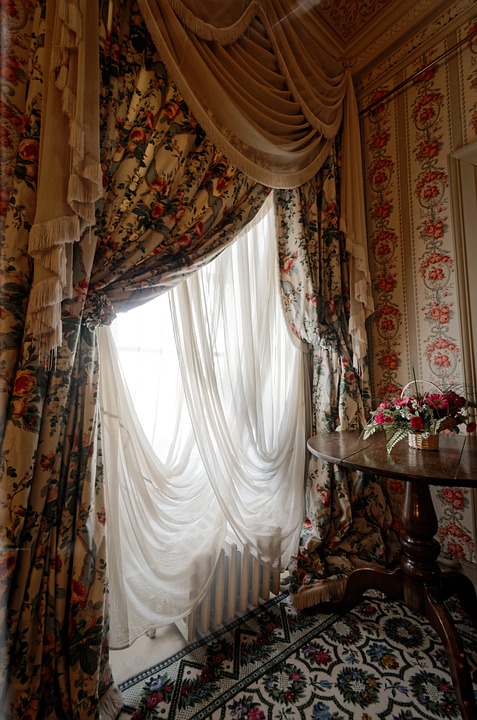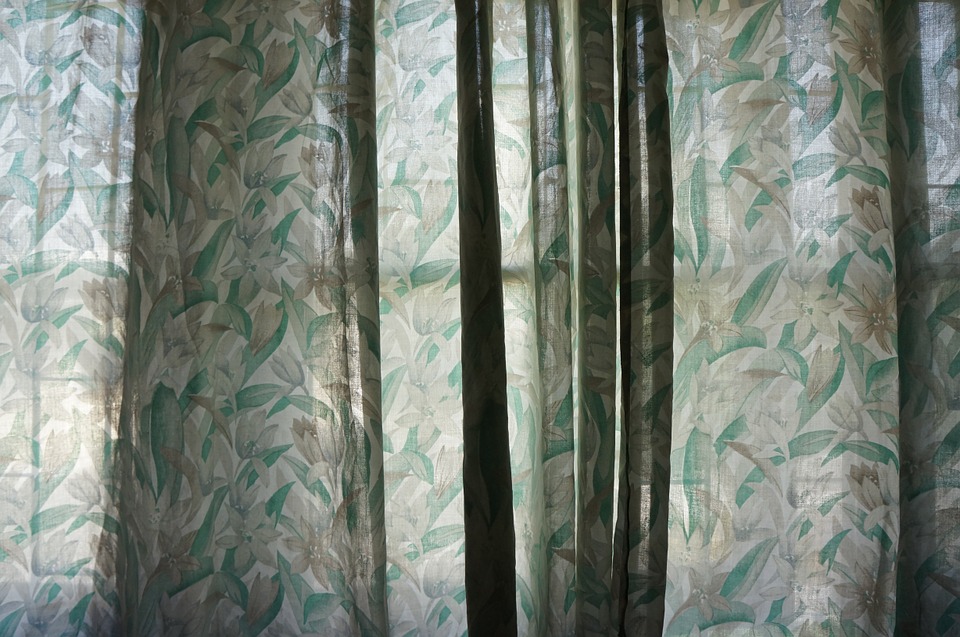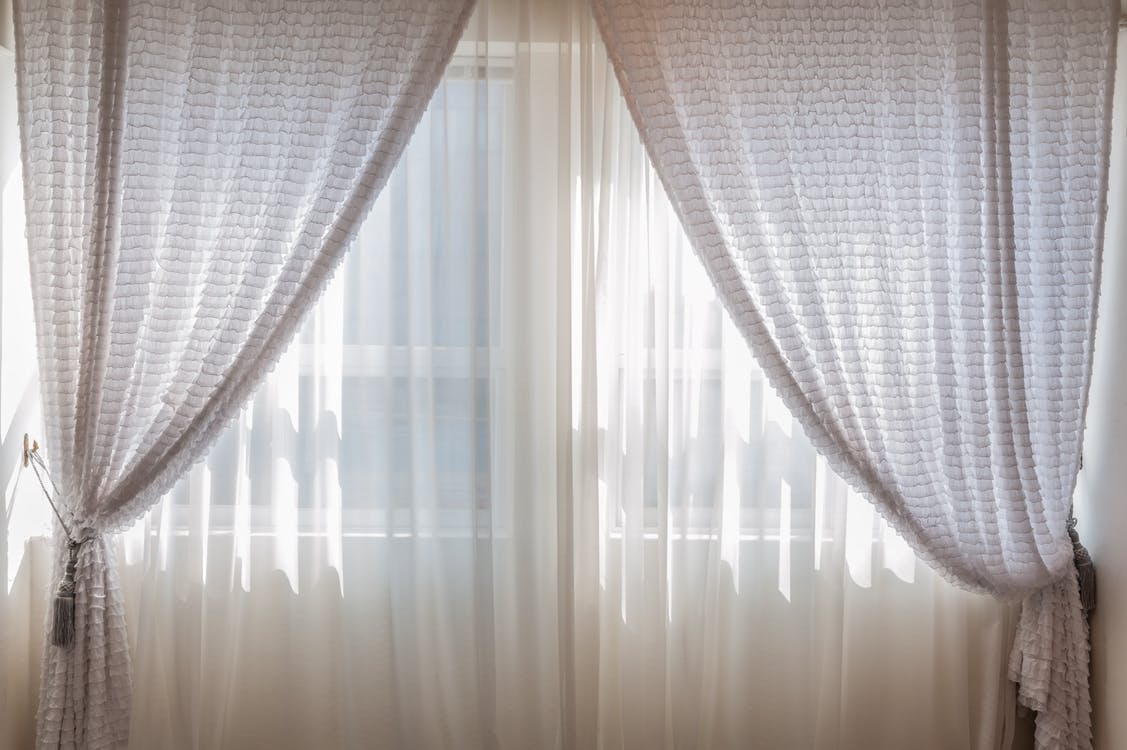Your choice of window curtains can make or break a room. These décor items take up a large amount of visual space and can have a huge impact on the look and feel of any room.
Not only do they complete the look of your living spaces, but research suggests that curtains in your bedroom can actually help you sleep better.
Functionality and style both have their place in your choice of curtains for your home. Whichever your priority is, here are 15 important aspects you should consider before you invest in new curtains for your home.
1. Functionality
The first thing you should think about when choosing window curtains is what their intended function is. Curtains have many uses in the home, such as:
- Privacy from the outside world
- Keeping out the cold
- Excluding light
- Adding depth, luxury, and color to a room
- As room dividers
Window curtains also have some more unusual applications in the home.
No matter how gorgeous your new drapes are, if they don’t fulfill their intended function they are of no use to you. Bear functionality in mind at every stage of choosing your window curtains.
2. Existing décor
Likewise, unless you are redecorating entirely, your new set of window curtains needs to fit in with what is already there.
Sleek, modern curtains will clash with a classically-styled dining room for instance and some colors just won’t match a trendy hot shabby chic bedding set.
3. Color
The first consideration when choosing a color is whether you want your window curtains to blend in with your décor or add a ‘pop’ to the room.
Blending in
If you don’t want your drapes to overwhelm the rest of your design, choose a fabric that is the same tone as your wall color but a few shades darker.
Alternatively, you can match one of the subtle shades from another item in the room, such as a painting or rug.
Neutral colors are also less likely to fade over time if you choose unlined window curtains.
Making a statement
Bold and bright colors draw attention to window curtains and can add drama to a room. This can be accentuated by sunlight streaming through unlined curtains. The effect of sunlight through your window curtains can sometimes bathe a room in color when the curtains are drawn.
Bear in mind that some colors, like blue, may create an eerie glow in an otherwise dimly lit room.
Bright colors tend to fade if they are exposed to sunlight continuously which is not necessarily a concern if you like to change things up often.
4. Patterned, printed or plain?
Interior designers agree that if your furniture, bedding or rugs are patterned, drapes in a solid color are your best bet.
Plain colored rooms with solid color furnishings will benefit from adding some energy in your choice of window curtains. Small neutral prints like paisley or small polka dots add texture, while a bold, bright pattern or image can lift a dull room.
As long as the pattern relates to some other item in the room, it shouldn’t clash.
5. Lining
Lined window curtains are the way to go if you are after total privacy or darkness. The added expense of lining your curtains has other benefits too such as:
- Shielding fabric from sun damage
- Adding luxurious substance to the look of your curtains
- Extra protection from draft
- Preventing silk window curtains from rotting
You can even go as far as interlining your window curtains, by including an extra layer of flannel-like fabric to maximize these positive aspects.
If you want the light to filter through your drapes or if they are simply decorative then unlined will do just fine.
6. Blackout lining
Blackout lining is an extra thick lining which can be added to existing curtains or included in your original spec. This type of lining totally blocks out sunlight for the ultimate in restful sleep.
It can also help in noise reduction and will add warmth to your room in winter. During summer, blackout window curtains prevent the sun’s rays from blazing into your space and overheating it.
7. Fabric
The fabric is one of the most important considerations when purchasing window curtains and can be quite daunting when you look at the variety available.
Your choice of fabric affects your window curtains in three important ways:
Mood
Heavy silk or velvet drapes can add elegance to your room, while cotton, cotton blends, wool and wool blends will bring a crisp neat feel to your look.
Practicality
Some washable fabrics like rayon blends and cotton sateen can create the luxurious feel of silk and velvet which are both dry-clean only.
Appearance
If the fabric of your window curtains is too thick for the space it is in, it may not fold attractively when the curtains are drawn. Likewise, too light a fabric may appear ‘fly-away’ and not hang well, or crease easily.
Durability
As a rule of thumb, the more expensive a material, the longer it will last. Silk, while expensive, is not a great choice for window curtains, but faux silk is one of the best choices. Other great options for long-lasting wear are linen and velvet.
Light
The less dense the fabric is, the more light it will let in unless it is lined.
If you want to make sure of your choice of fabric, you can familiarize yourself with the look and feel of various fabrics in a fabric showroom. Hold up a few yards of each material to a window to get an idea of how it will look against your own window. Pleat it up like an accordion and see how it reacts – too much flare looks unattractive in a curtain.
Touch and feel are important considerations when choosing a fabric too. You want something that feels as good as it looks. Feel is also a good indicator of quality and how well the fabric will hang.
8. Window Curtains and Washability
While window curtains don’t need to be washed very frequently, dry cleaning can be costly and inconvenient so this is a more important aspect than you may think. Decide from the outset whether you want dry-clean only or washer-friendly window curtains. Remember, you can ruin expensive dry-clean only drapes by throwing them in the washer.
9. How low should you go?
Style magazines will have us believe that puddling your window curtains on the floor is the way to go. While this does look super-glam and sophisticated, it is not a very practical option. If you have small children or pets, don’t even think about it. It can also become frustrating to rearrange them every time you open the curtains.
A more practical approach is for your window curtains to hang about a ½ inch above the floor. This keeps them out of reach of most dust and dirt and still creates an elegant look. While you do want your drapes to hang as close to the ground as possible, you may be restricted by a sill, counter or radiator. In this case, measure your curtains to ½ inch above these fixed objects.
The middle ground between these two options is allowing your window curtains to extend onto the floor for 2 or 3 inches. This looks good in most rooms and is less labor intensive than full-on puddles. This option works very well on uneven floors where your measurements could be slightly off.
Before you start measuring and ordering your custom made window curtains there are a few more things you need to consider regarding height.
10. How high will the curtains be mounted?
With standard windows, the general rule is to hang your curtain brackets on the wall above and outside the window molding. If you don’t want to cover up your intricate window frames, then you can hang the curtains inside the frame with a tension rod.
For altering the appearance of a window, there are two design tricks that you can use:
Hanging above the frame
By hanging your window curtains slightly higher, you can make a window appear taller, especially when the drapes are drawn. Some designers even mount tracks on the ceiling for dramatic effect, but about 6 inches above the window frame is the norm.
Hanging wider than the frame
In the same manner, you can make a narrow window appear wider, by extending the width of your window curtains up to 6 inches beyond the frame on either side. This is another way to reveal your window molding when the curtains are open.
If you like, you can use both of these techniques together, this is especially effective in making small rooms appear larger too.
When measuring the length of your window curtains take all of these into account. Measure from the curtain rod to the floor and round that figure up. You can always increase the hem if they are too long.
11. Width
The next dimension you need to decide on is the width of your window curtains. Measure your curtain rod and double that figure. This is to ensure that your curtains look full and draped. If the drapes are purely decorative and won’t be drawn, you only need about 1 ½ times the full width.
The extra fabric will also do a more effective job of blocking out the sun.
12. The top hem
The heading of your window curtains will be determined by how you are attaching it to the window. Different types of top hems create different looks and also affect how easily the curtain will slide. You can create a romantic, formal or elegant appearance with the clever use of top hems.
Some of your options include:
Basic heading with hooks
These types of top hems are attached to the rod with rings either stitched into the hem or with drapery hooks.
Rod-Pocket Heading
Perfect for window curtains that will stay put, this option involves a channel along the top which slides over a rod, creating a casual gathered effect. This technique is often used for kitchen curtains.
Pleated Heading
Pleated headings come in all shapes and sizes from pencil pleats to box pleats. They are usually attached with drapery hooks and have fullness ‘built’ into them so no extra inches are required for this when you measure the width of your window.
Tab-top Heading
This relaxed look involves flat loops of fabric which are sewn to the curtain and hang on the rod. Sometimes buttons or ties are used according to the look you want to create.
13 Pelmets and tracks
Apart from adding style to your window curtains, pelmets help with regulating the temperature of your room and can be used with both drapes and blinds. The type of pelmet you have will affect your choice of curtain style and color.
Tracks are more subtle and take a back seat to your curtain design. The types of windows you have may dictate which option you will have to use for your window curtains, which in turn affects a number of your other design choices.
14. What about curtain rods?
Curtain rods are a more flexible option and can easily be up-scaled using decorative finials on the ends. Your rods and finials should suit the curtain fabric you have chosen and compliment the overall look of our room. Heavier fabrics look better on thicker more ornate rods, while lighter fabrics need something more elegant and understated.
There are various types of rods you can choose from:
Classic Rod
An adjustable pole, which can have a variety of finials attached to it. There are double-rod versions available if you want to include sheer curtains in your design.
Return Rod
These are U-shaped rods that screw into your wall. The rods curve around the window curtains to block out light completely. These are also available in a double-rod style.
Track Rod
These rods have tracks for drapery hooks concealed inside them, combining the design appeal of a rod with the smooth sliding ease of a track curtain.
15. Decorative trims and tie backs
These optional extras will depend on the look you are after. Metal tie back rods create a more understated look, while fabric tie backs with all the loops and frills create a romantic or old world look.
Make sure you choose tie backs that match the window curtains you have spent all this time crafting.
Now that you have all your parameters in place it’s time to start hunting for the perfect window curtains. You could save yourself the trouble by visiting our website for the widest range of custom curtains available. We can make curtains out of any fabric and with any design. We can even create a fabric out of your favorite photographs!
Getting exactly what you want is easier than you think, and it needn’t cost the earth either.


